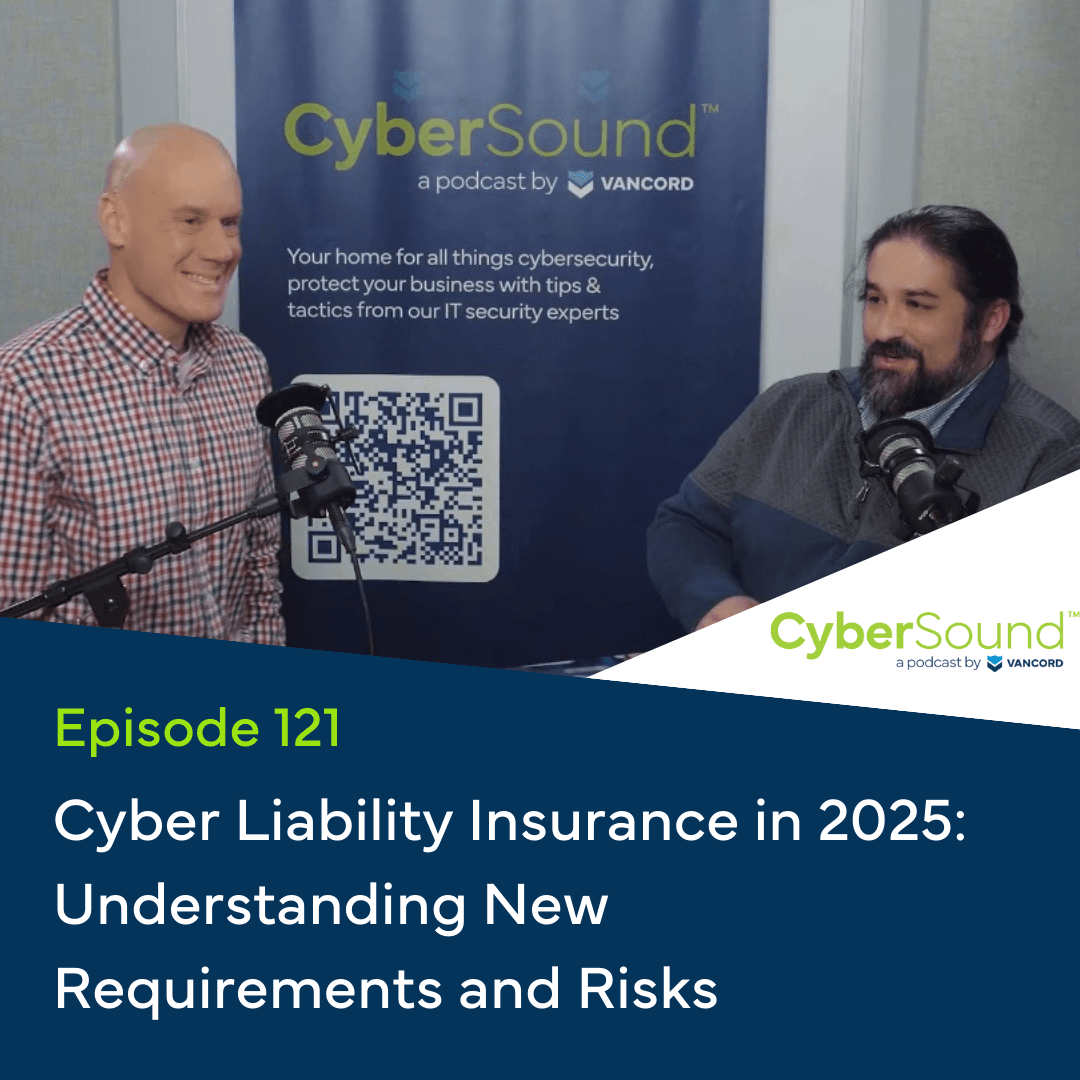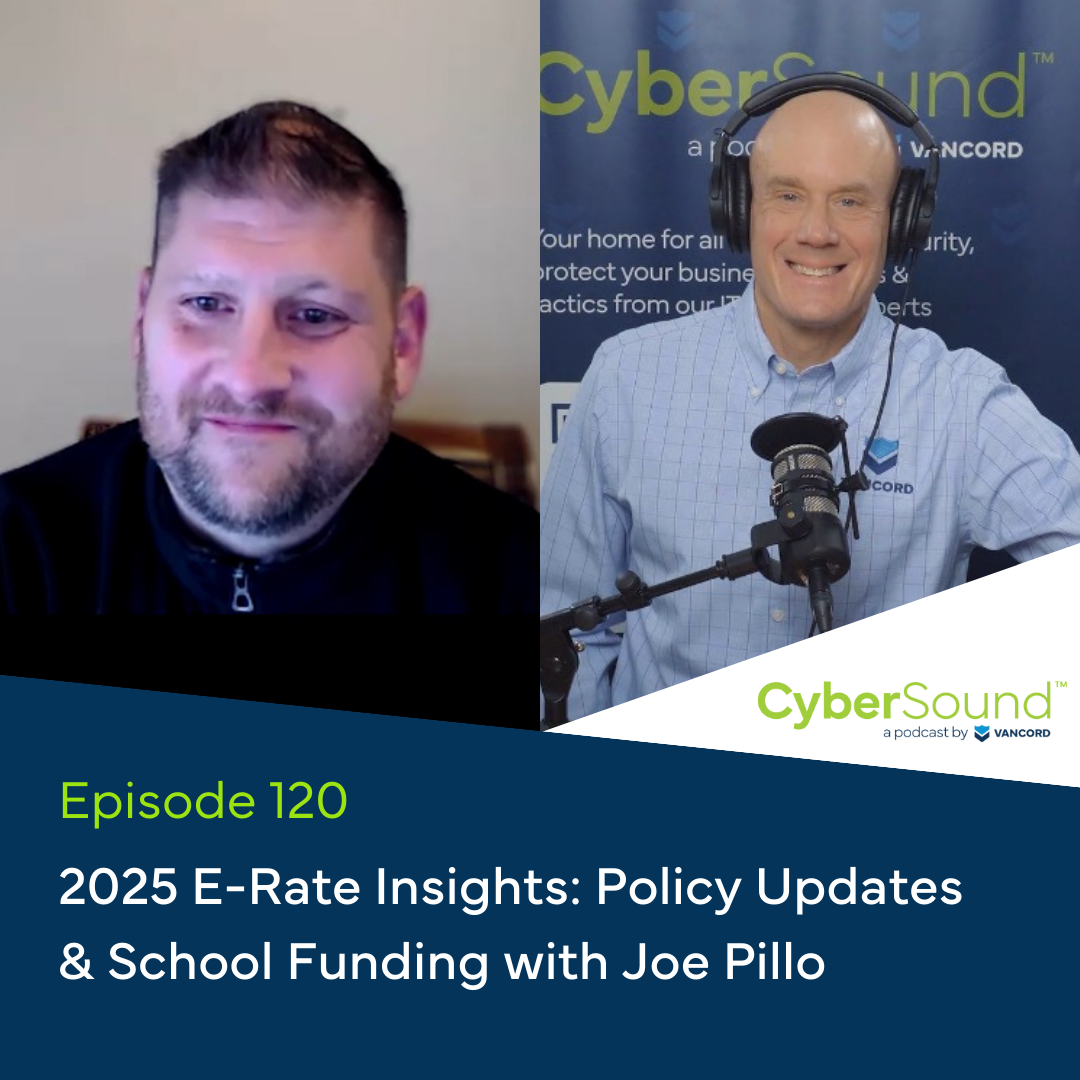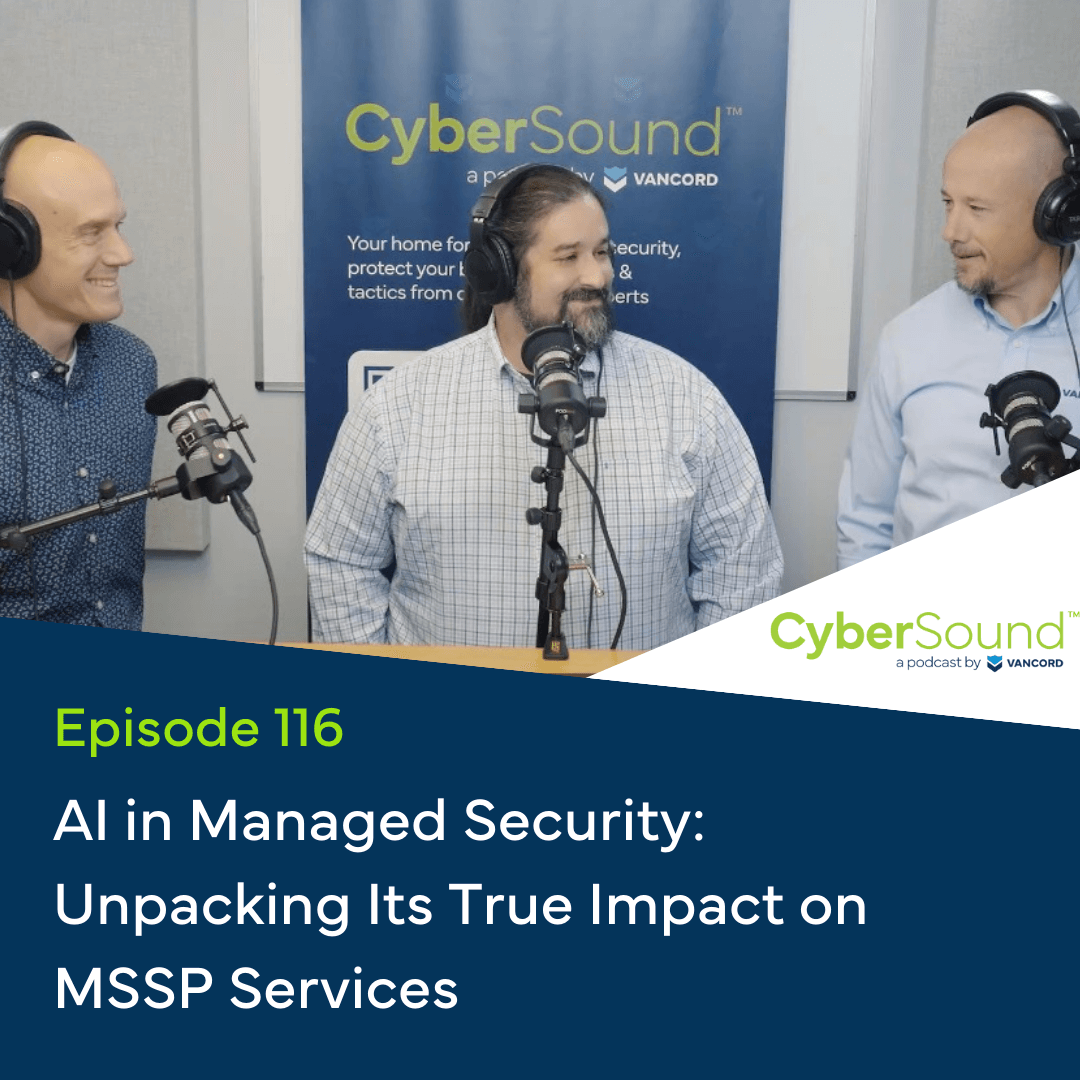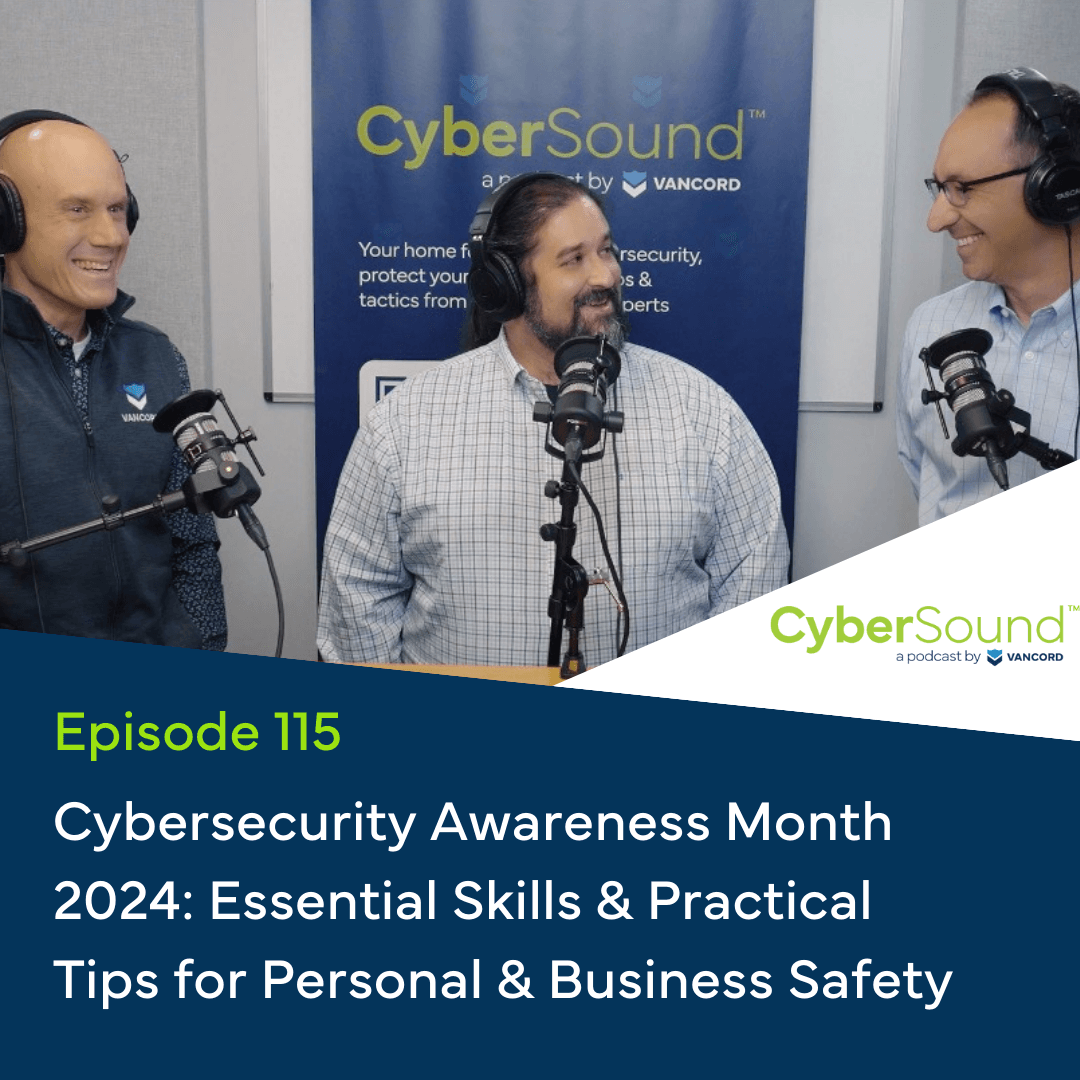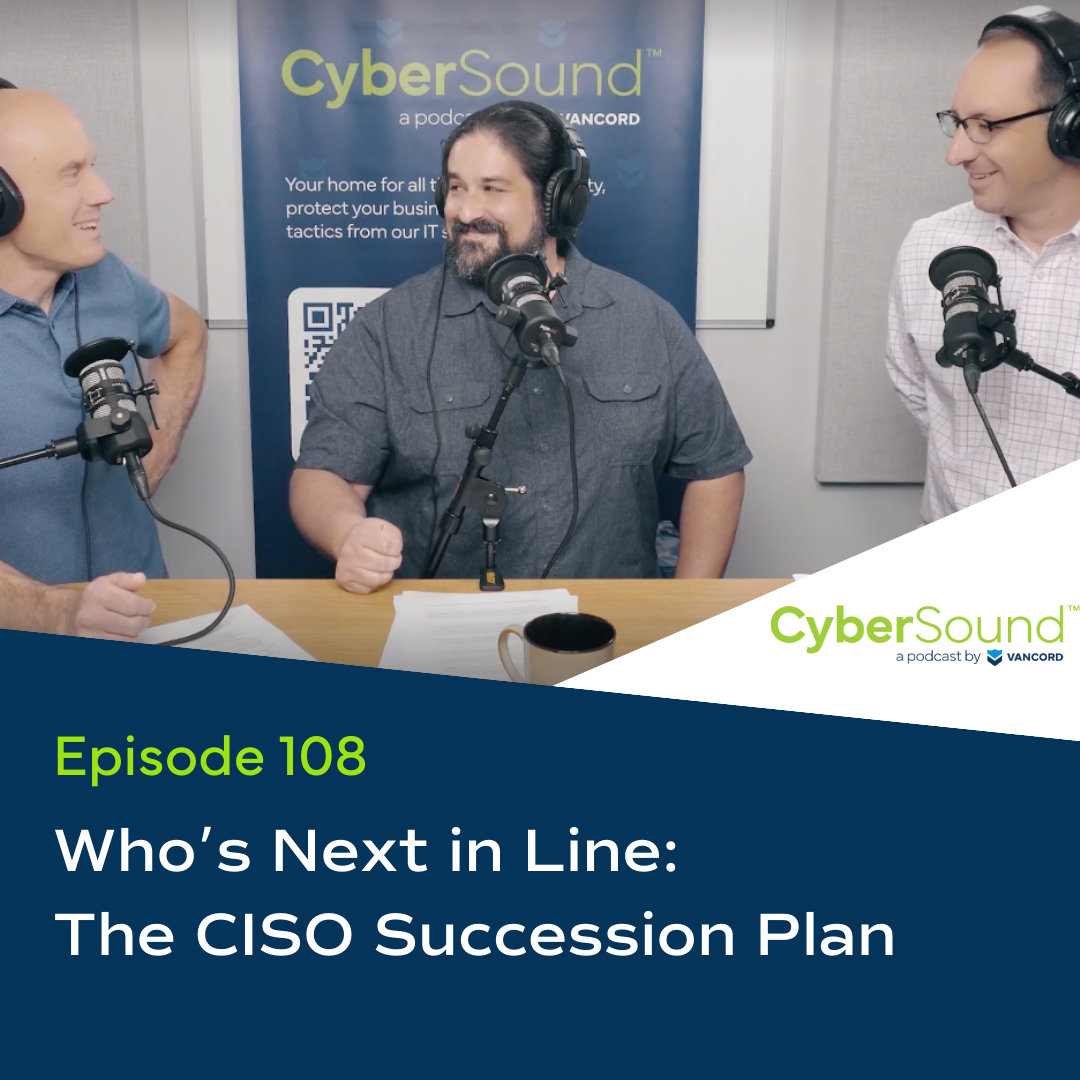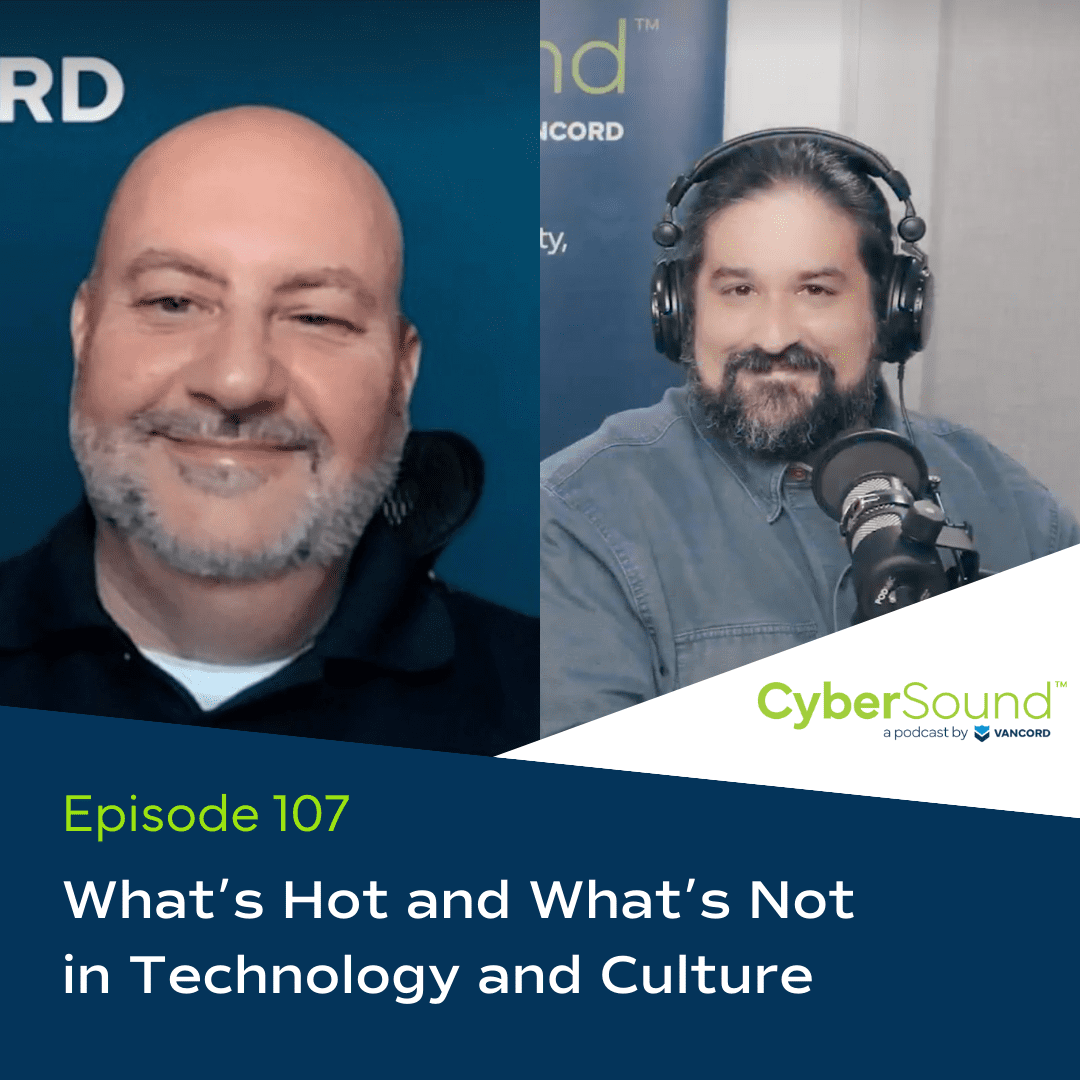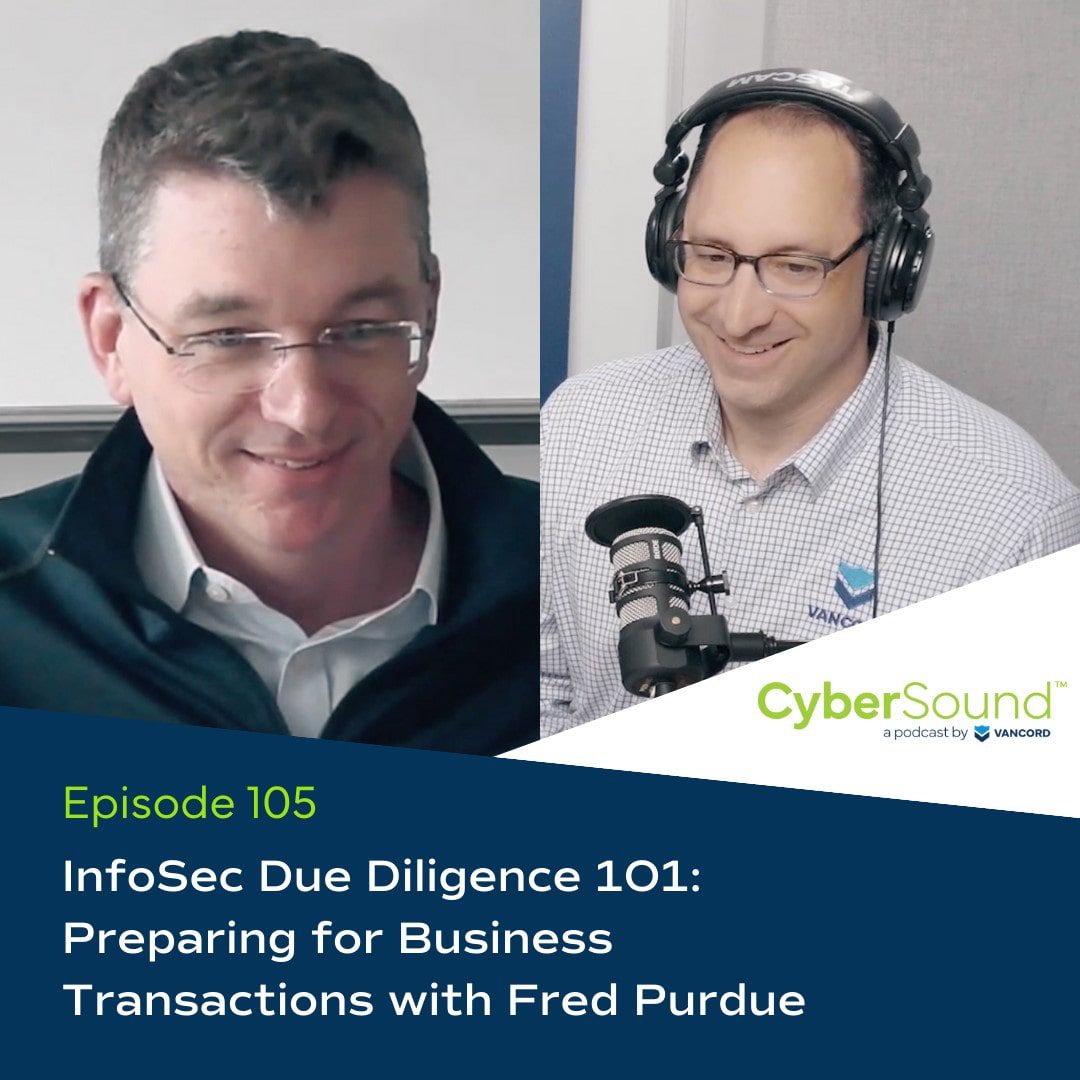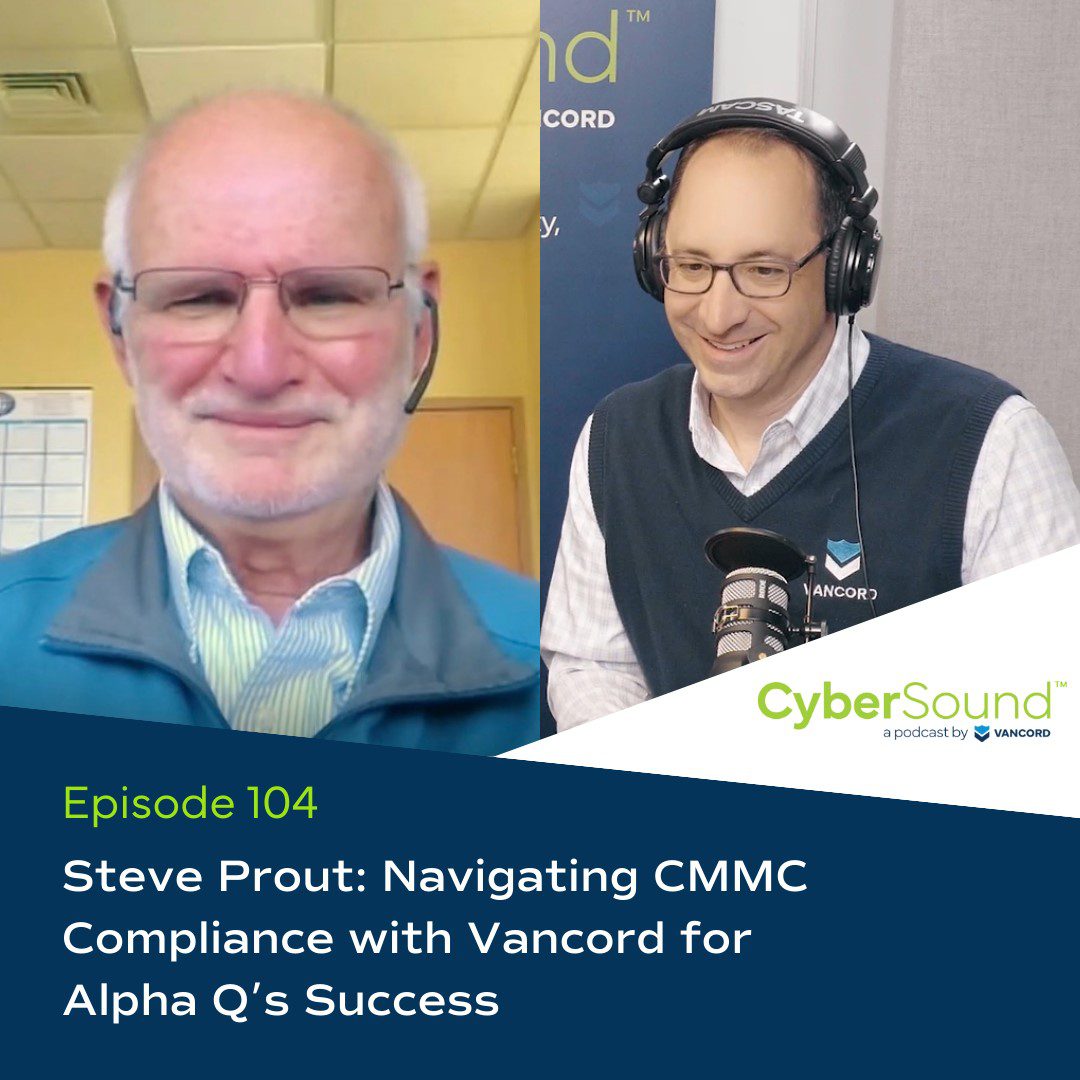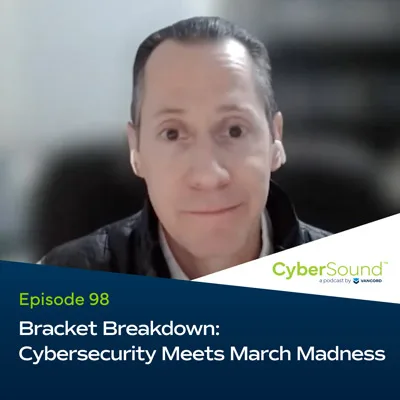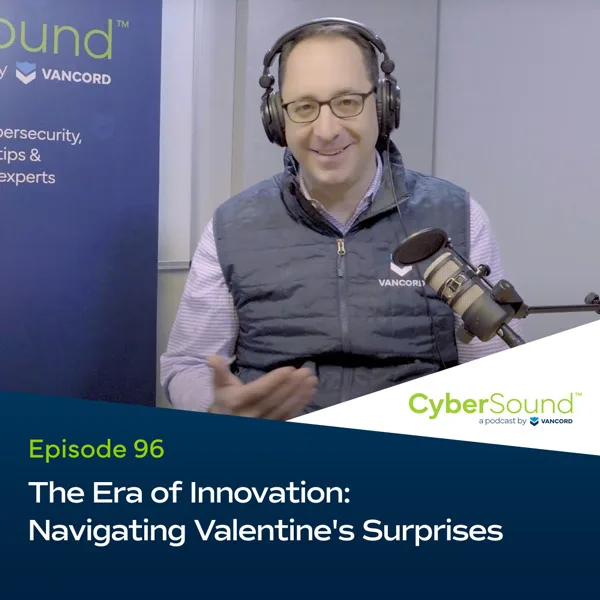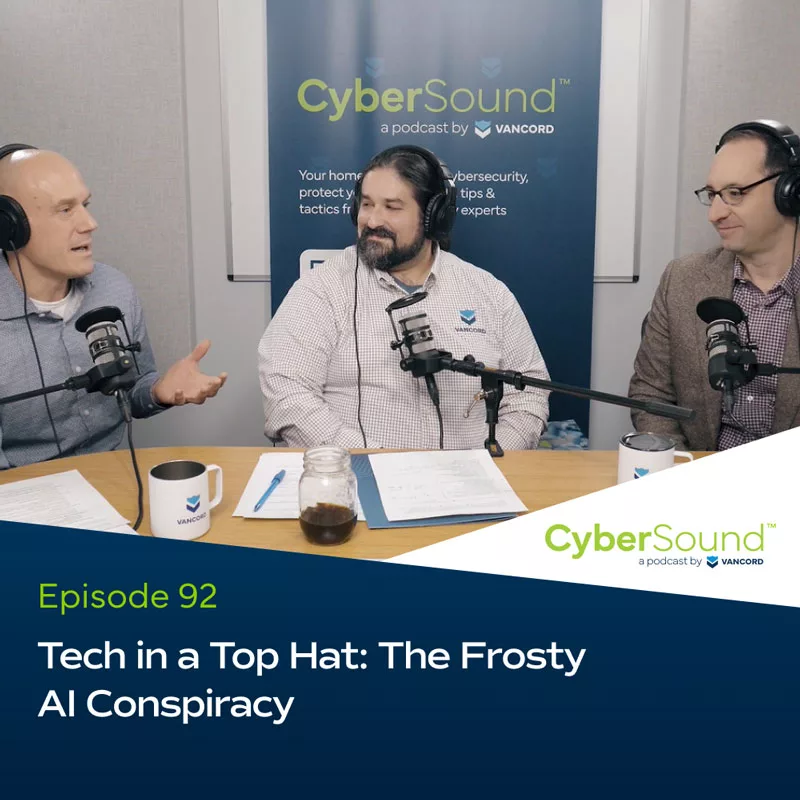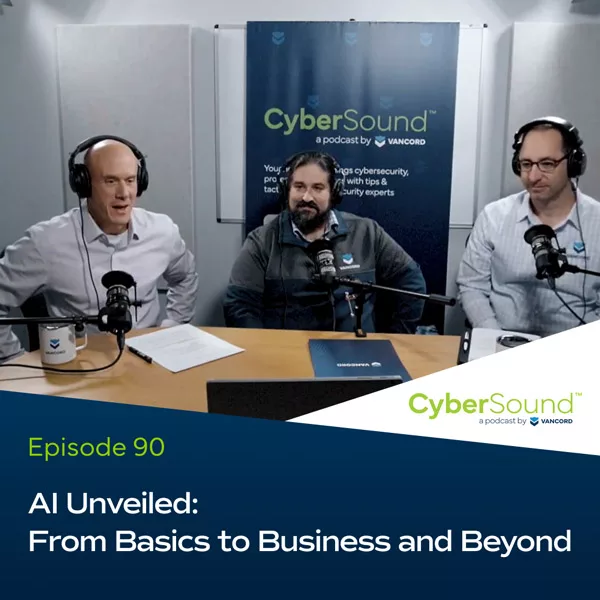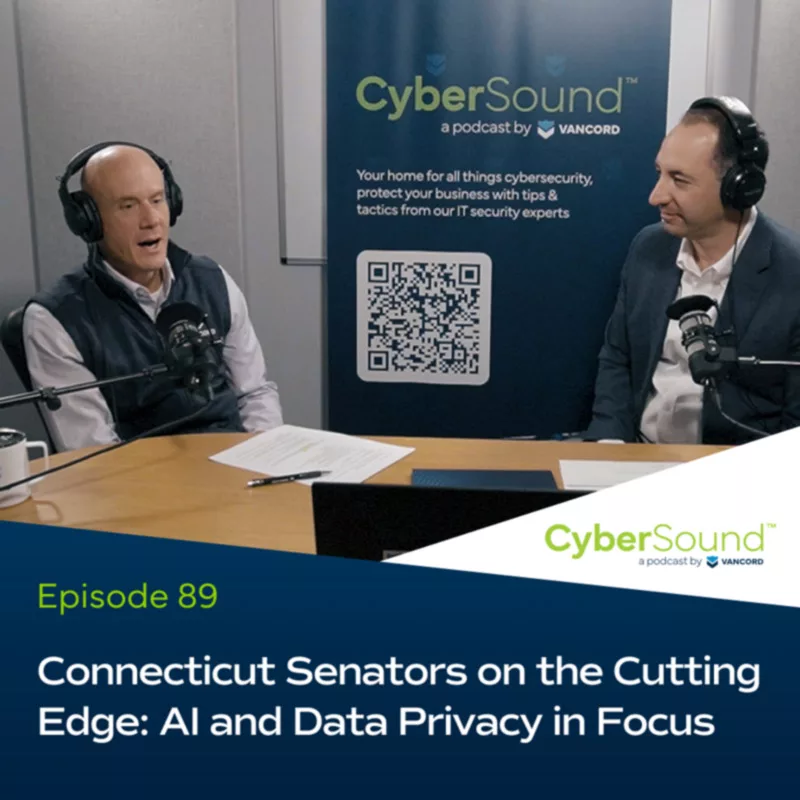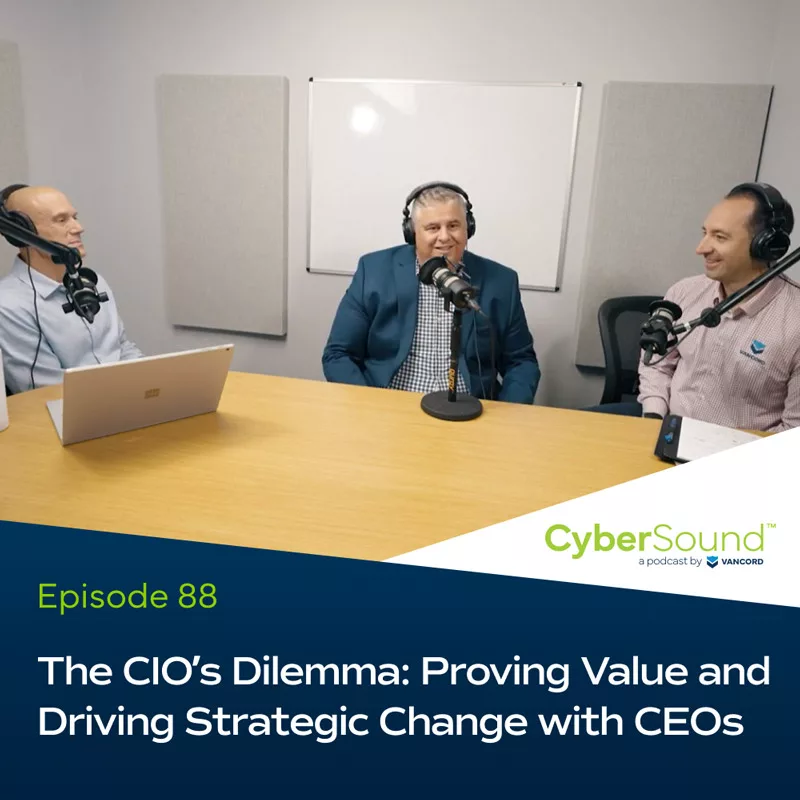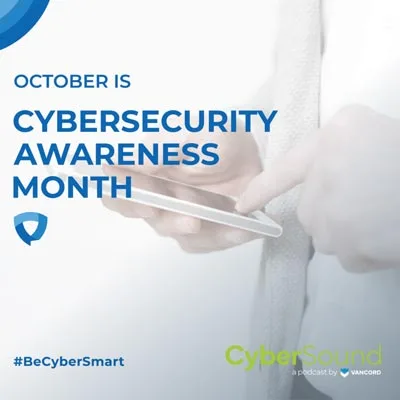00:01
This is CyberSound, your simplified and fundamentals-focused source for all things cybersecurity.
Jason Pufahl 00:11
Welcome to CyberSound. I’m your host, Jason Pufahl, joined in studio by Michael Grande.
Michael Grande 00:16
Great to be here.
Jason Pufahl 00:17
And we’ve got Nathan Whittacre from Stimulus Technologies, the CEO on our Zoom, Nathan, thanks for joining today.
Nathan Whittacre 00:25
It’s my pleasure. Thanks for inviting me.
Jason Pufahl 00:27
Yeah, so this is going to be a slightly different format for us. We typically bring somebody in and talk a little bit about, like a security specific thing, or, you know, we’ve got a variety of different sort of vendors on here. This is the first time I’d say that we have somebody in the exact same space and really going to try and spend some time, hopefully in an informational way, or informative way, outlining what is an MSP, or an MSSP, and frankly, what value do we bring to a business, right? So, Nathan, you are an MSP out of well, you have a few offices. I know you’re in Nevada right now. Can you spend a couple of minutes on Stimulus Tech and give us an update?
Nathan Whittacre 01:09
Sure, CEO of Stimulus Technologies. We were founded in 1995 so back then, it was break, fix, building computers working out of my brother’s garage, you know, for friends and family and businesses that we we knew. Obviously, the industry has changed quite a bit since then. So expanded as MSP, and we’ll talk about what that means, came about and then moving into the MSSP world, we’ve grown dramatically over the last 15 years or so, we are in five different states, so Nevada is our headquarters, California, Oregon, New Mexico and in the Midwest, in Missouri. So that’s a little bit about us. And excited to talk about what MSPs are and how we can help businesses succeed.
Jason Pufahl 01:57
So that that story, I mean, you’ve got the same story about growing out of a landscaping business,
Michael Grande 02:03
Landscape company on our end, 2005, so you had a 10 year head start on that end. But yeah, we sort of family business started. My brother and cousin are the founders of the company, and I joined in in 2009 but similar story, working out of our other brothers, landscape nursery second floor, until we outgrew that space and sort of matured into a large organization and then just continue to grow.
Jason Pufahl 02:30
So, so let’s do this. So here’s the reality, right? You’ve been involved in Vancord now for 16/17, years. Nathan, you started your company. So we’ll say you’ve been involved for 30, I’m the I’m the fledgling here, right? Only having joined, you know, six or seven years ago, but I think it’s clear that the needs have changed, right? I mean, Nathan, you saying, like you kind of worked in a in a garage, fixing computers for friends and family, and then turned that into a business that supports business. And, you know, totally different practice. And I think, frankly, we started in a sort of similar way, but primarily resell, and then migrated more into that support space,
Michael Grande 03:14
Yeah, and that story, break, fix integration, sort of, there’s so many acronyms that are thrown around in this in this business. And Nathan, you made great reference earlier to sort of maybe defining the MSP. I would frankly love to hear your definition of what an MSP, MSSP means to you.
Nathan Whittacre 03:34
So for me, the transition from a break fix provider, a term that we use, which just means, if it’s broken, a customer will call us, we’ll go out and fix it. You know, that’s what break fix means to us. You mentioned like reseller or value added reseller, where you buy a product from a manufacturer like Dell or HP, and then you bundle some other services with it and sell it to the customer. But all those models are reactive, that the customer is making a request for service, and you’re, as a business, reacting to that request, where the concept around MSP and MSSP or managed service provider, managed security service provider, is a proactive model where there’s a suite of tools and services that are integrated in the company’s operations, along with expertise to provide the company with guidance on their technology services, how to integrate those and use those in their businesses to be more successful and then be proactive on issues, solving things before they occur. You know, hopefully resolving issues quickly. Because, you know, again, the businesses are integrated. You know, from a vendor to customer standpoint, there’s, you know, more insight of what’s going on. On, and so the service is much better and quicker, because the service provider knows what’s going on often before the customer does and can react to it.
Jason Pufahl 05:11
Well, I’m glad we recorded that, that was eloquent, because my follow up was going to be, you know what, when we’re talking with businesses that have IT needs and are trying to make that decision between, should they invest in full time staff to actually do that? Should they actually look at outsourcing that? The discussion often is like, what qualities do they want in an MSP? We hear a lot that they want both security and sort of your more traditional IT, support services, help desk, server networking, etc. Certainly, you’ve mentioned MSSP multiple times that that security element, I think, is important to everybody now, and everybody’s trying to figure how to deliver that. Everybody’s trying to figure out how to integrate that into their their existing processes that they’re probably pretty well developed around. But maybe between the two of you, like, what, what services do you feel the MSP, or MSSP really has to offer a business that’s considering making that move?
Michael Grande 06:17
Well, I’ll jump in just quickly, and I think, I think the needs change and evolve based on client size and complexity and sort of where they’re on their sort of technology journey, and what they’ve implemented, and maybe, in some cases, as we’ve grown. And this might be the same for Stimulus, the client you know has taken more on themselves and look for more specialization and expertise, and really looked to us as a provider to provide some of that, that knowledge in areas that you know. Maybe it’s just it’s hard to find that, that, that CISO, you know, that information security officer, or maybe outsource SOC services in the security side, maybe it’s more in the routing side, right, getting into infrastructure and cloud expertise, the expansion of cloud over the last several years. So I would say that from my perspective, I think the needs of the client really is sort of the primary driver of where the business has gone for us, and as we’ve grown and our client size has grown, sort of dictated that that build for us.
Nathan Whittacre 07:25
Yeah, I like, you know, kind of continuing on with that idea. You know, in our business, about 10 years ago, especially as companies were moving more and more to the cloud, you know, the release of Microsoft 365, and some of these cloud services. You know, we were concerned that our business would potentially go away. You know that, you know, there wouldn’t be as much need for IT provider, because a company could go out to Microsoft, buy the licenses directly for 365 wouldn’t need an Exchange server, Domain Controller anymore. You know, all these things that we’ve been selling for many years, and suddenly we would be cut out of the needs. And what we found was actually exactly the opposite, that businesses needed us even more, because as these services became more complex on the backside to make it easier for the customers to use them, there was more need for the service provider to make it work. And I think we called it the application for a while. You know, Apple products work really well together. You know, you have a MacBook, an iPhone, all these devices, and the customer is like, well, why could my business computers work like my Apple products do? I just pull them out of the box and they just work. And you’re paying a premium to Apple to make that integration work. And it’s the same way on, you know, a Microsoft environment or a business environment to make, you know, hybrid work, remote work, make it all secure, make it work in the cloud, in the office, all that is very complex, and the specialization that’s come out from the team members and the requirements for training and knowledge is just exponentially increased over the last 10 years. And so I think it would be difficult today for a small business, maybe under 100 or 200 employees to put an IT department together, unless they have a large budget to have that many team members there that have that specialization and training to do, you know, everything from help desk up to, you know, cybersecurity and you know, all and everything in between. It’s a difficult thing to do.
Jason Pufahl 09:40
So the it’s interesting, our model we has, over the last half dozen years, right? Our client size has grown. It’s much more common now that we have a collaborative relationship with an IT person or maybe an IT person or two that the client has, but we really provide a lot of the work for those complex services, right? And try and engage in more of an advisory capacity, in many ways, like understanding the business, understanding the direction that they should take to get more value out of IT, and operating as that advisor. And those are the those, in a lot of ways, are great clients to work for, because you’re not just dealing with day to day IT issues, right? My printer doesn’t work. My network’s having a problem. It’s much more about, how do I grow my business, and how do I leverage IT as an element of that? And I find that we’re doing a lot more of that now.
Michael Grande 10:38
Yeah, it’s it. There’s a that term, and it gets thrown around, I think, in a variety of different industries, it’s so applicable to what we do because of of the risk and the uncertainty, and in some cases, just there’s a, there’s a level of of complexity to technology services, but trusted advisor, right? You know, it’s, it’s, it’s, it’s been used in every sort of forum, but it’s such a it is an accurate representation of the role that we ultimately play, whether it is just the the remote help desk services or the ability to roll a truck, if, if, if you’re in a certain region and you’re supporting someone and they have an outage, or whatever it may be, or walk them through the road map of where they need to be on a compliance or regulatory perspective. You know, as the business gets more complex, and, you know, as time sort of goes on, I do, I think back, you know, 15, 16, years ago, about some of the challenges that we were facing and sort of cloud proliferation, and now where we are today, it’s, it feels like a completely different world,
Nathan Whittacre 11:43
No, and we’re in the same boat, you know? It’s, it’s very different that, and it’s got to be a trusted relationship between the service provider and the customer. You know, I like that trusted advisor because it is because of the complexity it the customer, the CEO, the decision maker on the other side, isn’t going to understand everything that goes into the cake. You know, there’s so many ingredients that go in to make the perfect cake, and there’s just no way to explain all of that. And so it’s incumbent on us as service providers to provide an idea that is understandable to the executive, to the decision maker of what we do, but also make, make it all work in the in the back, back end, yeah,
Michael Grande 12:32
And there’s just to sort of put one final bow on it. It’s just, you know, I think that’s where you know, honesty and transparency, transparency and integrity, really, over the long run, you could see, with a business that’s been around for 30 years, you’ve obviously established trust, and, you know, you’ve obviously run your business, and your and your staff represent themselves the way that you that you represent yourself and and I’d like to think the same for us, and that’s why we’ve been around for 20 years. And you know that transparency is so important because there are such layers of complexity in different areas and understanding that you can rely on, on the judgment. And you know there’s cost transparency, there’s a lot of different aspects to it that you have to consider to gain, to gain that relationship with the client.
Jason Pufahl 13:18
So I think that’s one of the challenges that I’m sure we both face, is sure we I’m sure we all good contracts that outline the services that we provide, but is the client fully understanding what’s in that contract? And are we using language that isn’t ambiguous at all, and are we having the conversations we need to have to ensure that they understand the service that we’re providing, and we’re providing what we say we are providing, right? Because IT is tricky that way, it to somebody who’s not in the field. You know, if it’s got a screen, if it’s got a keyboard, if it seems electronic like the feeling as well, you can support that, and you probably have expertise there. And it may or may not be something that you actually have contracted to support, right? And navigating that, especially we found on the security side, has really been challenging. We used, you know, going back as if going back five years, you know, we like to use the word incident when talking about a general IT issue, right? Like call and place your your incident call, yeah. And then we had people, of course, calling us for, you know, cyber attacks and ransomware, for incident response, which to us, is completely different, completely different, yeah, but didn’t feel completely different to a client. And right, navigating those is really tricky, Setting expectations and having clear sort of delivery marks and SLAs and what is covered, I think the language that we use as we made sort of reference to all the acronyms early on in the conversation, right? And it can be very confusing to clients. It’s sometimes it’s confusing to ourselves, you know, what is contained in a certain support engagement or, any type of engagement, but, yeah, but cutting setting clear expectations is just so important to success.
Nathan Whittacre 15:06
I think the other thing too, that’s interesting about our industry is the better the work that we do, the less it seems like we’re doing, right? If we’re doing a great job and we’re being proactive. We’re maintaining the systems. All the updates are occurring. We’re protecting the environment. You know, nothing goes down. It almost looks like we’re not doing any work. And it’s, it’s just amazing how much work has to be done to make that, make that work well. And you know, that’s the hope for us, is that, you know, the the conversations we’re having are, you know, let’s implement a new line of business application to improve, you know, the our clients, customers experience. Or, you know, let’s, let’s onboard more employees because the customer is growing or moving to a new market, or whatever it may be, those are the conversations we want to be having, rather than calls about, you know, the emails going down, or, you know, cybersecurity incidences, or whatever it may be, happy to do both, but it’s certainly if we’re, if we’re doing a great job, that’s where we want to get to is having those, those really high level, strategic conversations with our clients and implementing the solutions to make their businesses better.
Jason Pufahl 16:17
And oftentimes, you know, to a client, you’re only as good as what has occurred since the last problem, because there are always something right. There is the issue where the printer doesn’t work. There is, unfortunately, the client that gets ransomware. You know, there are things that happen. And you know, if you haven’t established trust, if you haven’t been transparent up front, those are really challenging to navigate, which is why I think communication is so critical in every engagement that we have. Because you need to make sure that you’re communicating regularly. You need to make sure that people understand what you’re doing, how you’re delivering it, and frankly, in some cases, understand how their employees have a role to play for good security or for utilizing technology as it’s intended, things like that.
Nathan Whittacre 17:03
Yeah, I generally, I fall back on this explanation of how to deliver technology services efficiently and productively while letting the business continue to run in a manner that doesn’t sort of interrupt their momentum. And I think that sometimes technology and security practices can feel like it’s so burdensome and it causes so much obstruction to the normal course of business, and we really work hard, and I assume and know Stimulus probably does the same thing. How can we make this more efficient, right? How can we help the business process continue? Let the clients move and do what they need to do, focus on their business and let us worry about the technology.Yeah, for sure, for sure. It’s definitely the back end should be as seamless as possible. You know, one thing I see in our industry kind of about trends and things like that that’s interesting, and kind of maybe a caution for all our clients that are listening. You know, there is a trend of, you know, I used Apple vacation a minute ago, but maybe this Walmart trend that’s kind of going on that, you know, there’s a suite of competitors, of people that are coming into industry offering a lot of services that sound really good at a very cheap price. And I’m sure that you know, you guys know that you know the amount of labor and time and expertise that it takes to deliver a great product and a great service to a client isn’t cheap. It’s it is, there is a minimum level of time and expense that takes to it takes to do that. So, you know, it’s important to understand what’s included in a service providers suite of offerings, and you know where they’ll be in the case of those incidents are happening. Are they, you know, do they have the right amount of insurance to protect the clients? Do they have the expertise to resolve these issues, or do they have to outsource, you know, the do the vendors that they’re using? Are they the top of the line, vendors, you know, Gartner comes out every year, you know, and has their, you know, their four quadrants. Are they buying, you know, the top quadrants and of products, you know? And I think those are questions that you know customers need to ask is, you know what, what is in that cake? Are you, and how do you, as a service provider, look at that? Are you buying the best ingredients? So it is the best service.
Michael Grande 19:30
That’s very well said, yeah, yeah. I mean, that’s, that’s exactly, you know, we used to use the, I guess we’ll stick with the cake analogy here, right? You know, like, you know, we’re eating the same cake that we’re that we’re selling to our clients, right? So we’re, we’re trying to incorporate that technology stack and understanding that we’re spending the time, the money and the investment on our end to protect what we hold there and also in the client’s best interest.
Jason Pufahl 19:57
And I think ultimately, we are looking for clients that respect and appreciate that you did take the time to vet your vendors, that you did take the time to, I mean, to your point right, to look at those that are in that top right quadrant, right, that are doing the job properly. Because there’s, I mean, I’m sure, like both of you, my phone rings off the hook with opportunities to purchase new products, and a lot of them just feel fly by night. And, you know, in two years, they’re either going to get purchased by somebody else or they’re going to be out of business, but they’re going to come in at a price point that is untouchable by mostly everything we’re doing.
Michael Grande 20:31
Yeah, and the consolidation that’s taking place in the industry, you know, a lot of it is, you know, private equity backed. And there’s a lot of of sort of roll ups that happen, and in some cases, it’s, it’s fantastic, and they built really good platforms, and they really do provide great service. But I certainly agree with Nathan’s point there, that, you know, there is, there is sort of this shift that’s happening, I would say, over the last five years, and certainly moving forward, that you can sense that there’s, there’s some low cost leaders. How about that for a terminology we’ll use that that are entering the space. So caveat,
Nathan Whittacre 20:32
Yeah, and it’s, it’s certainly not a terrible thing to look at them. I mean, we look at, you know, all the vendors out there, and we do an analysis. And, you know, we, we just switched a couple of vendors earlier this year, and it was actually about the same price. But, you know, the vendor we had been using was a Legacy product. They hadn’t been maintaining it well, and we, you know, we analyzed it and said, you know, we want to go with what’s best in class today, that it might have been best in class five years ago, but, you know, we want to move to something that’s best in class today. And and it amazed me. I mean, a part of this looking for 2025 we went through all our vendors. What services does it take us to offer a suite of products to our clients? And it was 72 line items. And it just kind of surprised me, like, you know, how many things, how many ingredients go into this service? And it’s, it is really amazing and, and it that is increased, you know, it used to be four or five different things. Now it’s, you know, in the 70s, and probably increasing from there.
Jason Pufahl 22:19
So let me I’m going to take a quick stab at summarizing the part of the conversation that is, what qualities should somebody be looking for in an MSP, if they’re considering that, and I think, certainly a company that is willing to have business related conversations and engage regularly, and transparency, transparently is one key quality, right? I think, I think that comes out loud and clear. Yes, I think, quite frankly, a an MSP that is using top tier products should be a consideration. Now I get that price might be an element for some businesses, and maybe that’s not as important, but our job is to stay on top of technology trends. Our job is to understand what vendors are top tier and which ones aren’t, and provide that that best possible service. There’s effort there, right? 72, there’s a lot of application that go into this, I think that’s a key element. And then that advisory element at this point now, you have to be able to to engage, to advance the business. It isn’t, it isn’t about keeping things running. And I think, in fact, it’s our job, and the expectation is simply that that’s our bread and butter. We should be really good at that. Sure, every once in a while, it may not work exactly right, but largely, things should be patched. Things should be things should be operationally stable, rolling out new IDs, rolling out new laptops, super easy. The complexity is, where’s your business going to go in five years? And let us be a part of that. And let us help guide you there, because that was what an internal organization would do, right? We need to take that responsibility on, yeah, but I don’t want to presume that those are the only ones. So do you do either of you have anything that you want to add to that list?
Nathan Whittacre 24:09
I would say internally, the people too, that work in the environment, I think it’s also, you know, review of the team and the training and certifications and not just that, but the personalities of of the engineers and technicians that are delivering the service are essential. So I often say in my company that we are a people business first and a technology business second. That’s great. And you know, it’s really important. I think it kind of goes back to how you do that number one that you said, how do you have those business conversations? And it really does take from, you know, the Help Desk technician all the way up to the level four engineer, to understand that, in the end, we’re delivering a service that makes somebody else’s life better. And that’s it’s a people transaction isn’t just about working on computers.
Jason Pufahl 25:00
So I always, I’ve got two kids, and one of the things I always like to say is you never underestimate the power of likability. People want, they want to do business with people they like, right? And so obviously you have to be competent and you have to deliver a good service. Fully likability is important. Yeah,
Michael Grande 25:16
I concur. I fully support that. That list is laid out, I think that that’d be top four or five to look at.
Jason Pufahl 25:26
So, Nathan, thanks. Thanks for joining today. I appreciate spending a little bit of time just collaboratively, right? We’re in the same field, so we don’t have this type of thing very often. But you know, collaboratively discussing what makes an MSP valuable and MSSP valuable, because we’re all doing the security work now and sharing your perspective on that. So thanks very much for joining.
25:45
It was a pleasure being here. Thanks for having me on.
Jason Pufahl 25:47
You’re welcome, all right. And if anybody really, if anybody wants to talk more about managed service providers, frankly, even if it’s not because you’re actively looking but you just want to understand the landscape and maybe make some decisions about what’s right for you, feel free to give us a call. Feel free to give Nathan a call. I have no doubt we’d be all be happy to chat. Absolutely. Thanks for listening, everybody.
26:06
We’d love to hear your feedback. Feel free to get in touch at Vancord on LinkedIn. And remember, stay vigilant, stay resilient. This has been CyberSound.





